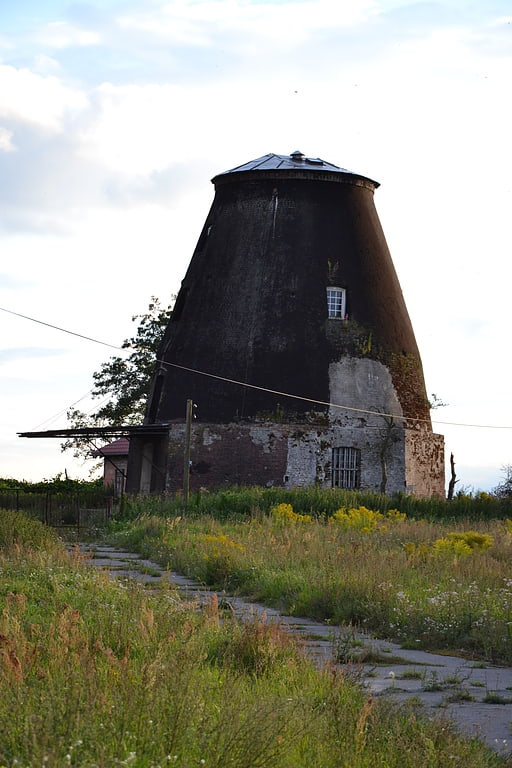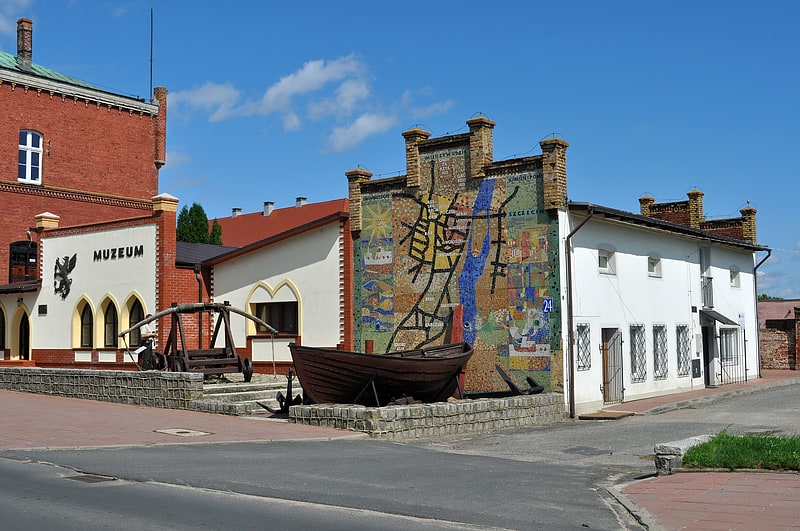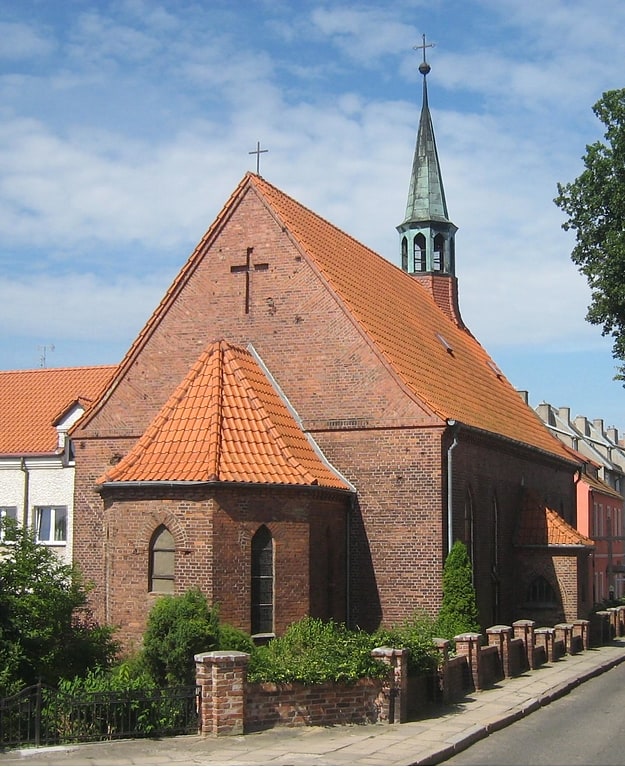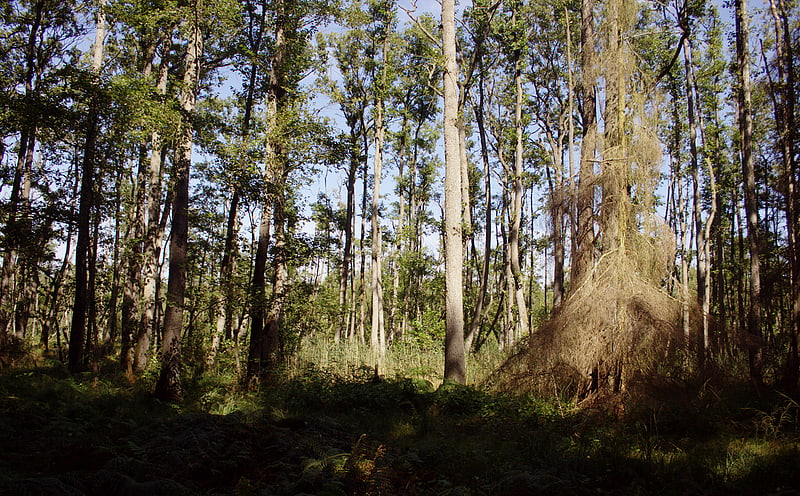Discover 6 hidden attractions, cool sights, and unusual things to do in Wolin (Poland). Don't miss out on these must-see attractions: Smock mill, Regional Museum, and Kościół pw. św. Stanisława. Also, be sure to include Gołogóra in your itinerary.
Below, you can find the list of the most amazing places you should visit in Wolin (Western Pomeranian).
Table of Contents
Smock mill

Monument in Wolin, Poland. Smock mill is a smock mill in the town of Wolin in the Kamień County, West Pomeranian Voivodeship, Poland. It is located in the eastern part of the town near the commentary, at the Jaracza Street. It is registered as a object of cultural heritage.
Mill was built in 1850. It has 3 consignations and has circular base. Currently it acts as an industrial mill.[1]
Regional Museum

Andrzej Kaube Regional Museum in Wolin - a museum located on Wolin's market square, next to the town hall.
The museum presents exhibits about the Wolinian tribe, the city's defense system, crafts, and beliefs of its medieval inhabitants. An attraction is a miniature of a Slavic god with four faces: Swietowit. The figure was found by archeologists excavating in Wolin.
The museum exhibition shows the range of settlement of the Wolinian tribe, the development of the town, from the establishment of the open settlement at the turn of the 6th and 8th centuries to its collapse in the 12th century, the defence system, harbour, economy, trade and beliefs. It was prepared on the basis of information gathered in chronicles, and above all, on the basis of rich archaeological sources obtained in the course of many years of excavations in the town. On request, visitors can listen to a tape guide in Polish, English, French, German, Swedish, Russian, Czech, Hungarian and Spanish, obtain tourist information about the region, and purchase guidebooks, maps, museum publications and souvenirs.
Kościół pw. św. Stanisława

Church of St. Stanislaus the Bishop and Martyr in Wolin - a temple built in neo-gothic brick style in 1848 as a Lutheran church. It is located on Kościelna Street.
Address: Kościelna 19, 72-510 Wolin
Gołogóra

Gołogóra - an elevation of 21.0 m above sea level on Wolin Island, on the shore of the Dziwna Strait, within the city limits of Wolin.
An archaeological reserve was established on the hill called the Hill of Hanged Men.
The name Gołogóra was officially introduced by decree in 1948, replacing the previous German name Galgen Berg.
Wzgórze Wisielców

Wzgórze Wisielców - an archaeological reserve located south of Wolin on the hills above the Dziwna River with a barrow cemetery dating from the 9th to the 10th century.
The fenced barrow cemetery is located on the Dziwna River, on the hill called Gologóra (21 m above sea level).
The barrow burial site on Wysłielców Hill, site 9, belongs to the group of the oldest early-medieval necropolises in Western Pomerania. It is a unique archaeological site, still preserved in a legible way, which in the early Middle Ages constituted a vast settlement complex of Wolin. The dead were buried here in cremation and skeletal rites. The clearly visible birhitualism is interpreted as an expression of the influence of various cultural centers of Europe at that time: Scandinavian as well as Christian centers from Poland and Germany. However, some of the burials fall into the oldest phase, which is characterised exclusively by mortuary rites.
The existence of the necropolis on Wzgórze Wisielcow dates back to the period when there were barrow cemeteries in Pomerania with exclusively burial or birational rites (9th-11th century). Originally, the graves had a circular shape. Their diameter ranged from 3 to 20 meters. During the research a barrow was discovered with a fence made of wooden stakes, which had been burnt before the grave was built. There were barrow and sub-burrow graves. The former were few in number. Burial graves occurred in the form of: ashlar, pit and layer graves. Some were surrounded by stones. Sometimes stones formed a paving under the layer of the pile.
The skeletal burials were at the level of the ground at the time, slightly sunken into the caliche, although most were reburied in barrows.
The dead were placed in wooden coffins. In skeletal burials the dead rested upright on their backs. Some barrows contained 2 or 3 burials.
The deceased were relatively poorly equipped. A characteristic feature of the Pomeranian necropolises is the richer equipment of women's graves. Among the inventories, ceramics were discovered, more rarely knives, whetstones, temple buckles and beads.
The name "Hill of Hanged Men" is later and is connected with the execution of pirates and criminals. The grave of a headless young man discovered at the highest point of the hill indicates that the sentence was carried out by beheading.
At the end of the 19th century, 93 barrows were counted on the hill, of which 34 graves remain.
There was an extensive settlement of the funnel-shaped cup and corded pottery culture here.
Rezerwat Łuniewo

Łuniewo nature reserve - A peatbog nature reserve with an area of 10.5413 ha, established on 23 January 1973, located in the West Pomeranian Voivodeship, in Kamień County, in the Wolin commune, 0.5 km south-southwest of the Warnowo railroad station on the Szczecin Dąbie-Swinoujście line. At a distance of several hundred meters north is the border of Wolin National Park and the buildings of the mid-forest village of Warnowo.